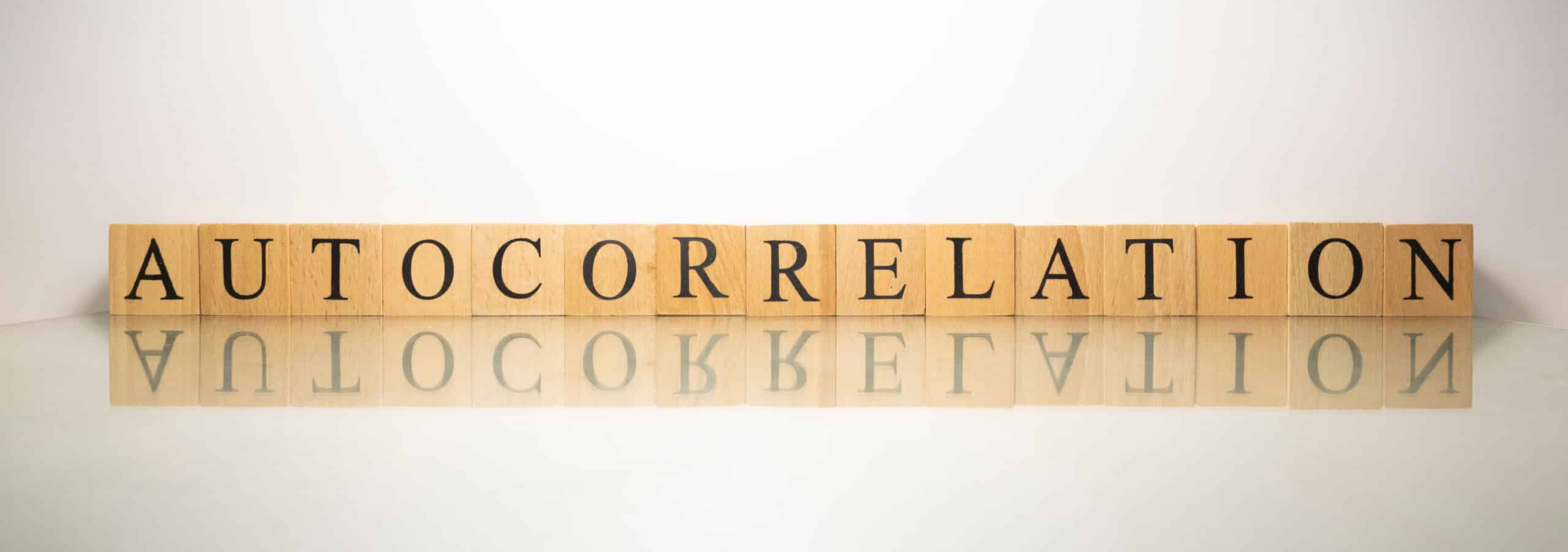
To optimize the benefit of your forecasting, you would like your time series values to be independent. Unfortunately, sometimes your values are correlated. This autocorrelation will have an impact on your ability to interpret what the data is telling you.
Autocorrelation refers to the correlation between a time series variable and its own lagged values over time. In other words, it measures the degree of similarity between observations of a variable at different points in time.
Autocorrelation is an important concept in time series analysis as it helps to identify patterns and relationships within the data. Positive autocorrelation occurs when a time series variable is correlated with its past values, while negative autocorrelation occurs when it is correlated with its future values. Zero autocorrelation indicates that there is no correlation between the variable and its lagged values.
Autocorrelation can be assessed using a variety of statistical techniques such as the autocorrelation function (ACF), partial autocorrelation function (PACF), and the Durbin-Watson statistic. These methods help to quantify the strength and direction of the autocorrelation and can be used to model and forecast time series data.
Overview: What is autocorrelation?
Autocorrelation has several benefits in time series analysis:
- Identifying patterns – Autocorrelation helps to identify patterns in the time series data, which can provide insights into the behavior of the variable over time. This information can be useful for understanding the underlying factors that affect the variable and for making informed decisions.
- Model selection – Autocorrelation can be used to select appropriate models for time series analysis. For example, if the autocorrelation function shows a significant correlation at lag k, an autoregressive (AR) model with order k may be appropriate.
- Forecasting – Autocorrelation can help to forecast future values of a time series variable. By modeling the autocorrelation structure of the data, you can make more accurate predictions of future values.
- Validating assumptions – Autocorrelation can be used to validate assumptions of statistical models. For example, in linear regression analysis, autocorrelation in the residuals can indicate a violation of the assumption of independent errors.
- Hypothesis testing – Autocorrelation can affect the results of hypothesis tests, such as t-tests and F-tests. By identifying and correcting for autocorrelation, we can obtain more accurate and reliable test results.
An industry example of autocorrelation
Suppose you had daily sales data for the last 60 days. Autocorrelation can help to identify if there is any pattern or relationship between the current day’s sales and past sales values.
For example, let’s say you calculate the autocorrelation coefficient for lag 1, which measures the correlation between the current day’s sales and the previous day’s sales. If the autocorrelation coefficient is positive and significant, it indicates a positive relationship between the current day’s sales and the previous day’s sales, suggesting that sales tend to follow a trend.
On the other hand, if the autocorrelation coefficient is negative and significant, it suggests a negative relationship between the current day’s sales and the previous day’s sales, indicating that sales tend to reverse direction.
Frequently Asked Questions (FAQ) about autocorrelation
Here are some frequently asked questions about autocorrelation:
Why is autocorrelation important in time series analysis?
Autocorrelation helps to identify patterns and relationships within time series data, which is important for modeling and forecasting future values of the series.
How do you interpret autocorrelation coefficients?
Autocorrelation coefficients range from -1 to 1. A positive autocorrelation coefficient indicates a positive relationship between the variable and its past values, while a negative autocorrelation coefficient indicates a negative relationship between the variable and its past values. A coefficient of zero indicates no correlation.
How can autocorrelation affect statistical tests?
Autocorrelation can affect the validity of statistical tests, such as regression analysis, by violating the assumption of independence of the observations. This can lead to biased parameter estimates and incorrect hypothesis testing results.
What methods can be used to correct for autocorrelation?
Methods to correct for autocorrelation include differencing the time series data, using autoregressive integrated moving average (ARIMA) models, or including lagged variables as predictors in a regression model.
Can you have negative autocorrelation?
Yes, negative autocorrelation occurs when a time series variable is correlated with its future values rather than its past values.